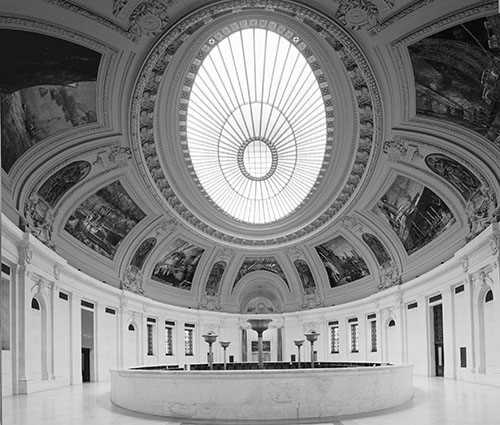What is a Historic Structure?

A historic structure is a building, site, or object that is considered to have significant historical, architectural, or cultural value. These structures are typically recognized and protected by local, state, or national preservation organizations.
Historic structures can range from grand mansions and iconic landmarks to humble homes and industrial buildings. They can be found in urban areas, rural landscapes, and everything in between. Each historic structure tells a unique story about the people, events, and trends that shaped a particular time and place.
Preserving historic structures is important for several reasons. Firstly, they serve as tangible links to the past, allowing us to connect with and learn from previous generations. Historic structures also contribute to the character and identity of a community, adding depth and richness to its cultural heritage.
Furthermore, historic structures often possess architectural and design qualities that are no longer found in modern construction. They showcase craftsmanship, materials, and techniques that have been lost or forgotten over time. By preserving these structures, we can continue to appreciate and study the skills and artistry of past generations.
It’s worth noting that not all old buildings are considered historic structures. To be classified as historic, a structure must meet certain criteria, such as age, significance, and integrity. These criteria vary depending on the specific preservation organization and the level of recognition sought.
Operation of Historic Structures

1. Documentation: The first step in the operation of a historic structure is to thoroughly document its history, architectural features, and any previous alterations. This documentation serves as a reference for future restoration and maintenance efforts.
2. Regular Inspections: Historic structures should undergo regular inspections to identify any signs of deterioration or damage. These inspections can help address issues before they become more severe and costly to repair.
3. Conservation Planning: Developing a conservation plan is essential for the long-term preservation of a historic structure. This plan outlines strategies for maintenance, restoration, and repair, taking into account the historical significance and architectural integrity of the building.
4. Maintenance: Regular maintenance is crucial to prevent further deterioration of a historic structure. This includes routine cleaning, repairs, and upkeep of the building’s exterior and interior elements.
5. Restoration: When necessary, restoration work should be carried out by skilled professionals who specialize in historic preservation. This may involve repairing or replacing damaged elements while maintaining the original character and materials of the structure.
6. Accessibility: Ensuring accessibility to a historic structure is important for its continued use and enjoyment by the public. This may involve making necessary modifications to accommodate individuals with disabilities while preserving the building’s historical integrity.
7. Public Engagement: Engaging the public in the operation of a historic structure can foster a sense of ownership and pride in the community. This can be achieved through educational programs, guided tours, and events that highlight the historical and cultural significance of the building.
By following these operational guidelines, historic structures can be preserved for future generations to appreciate and enjoy. The careful management and maintenance of these buildings contribute to the preservation of our cultural heritage.
Criteria for Historic Structure Tax Credits
Age:
The structure must be at least 50 years old to be eligible for historic tax credits. This requirement helps ensure that the building has stood the test of time and has historical value.
Significance:
The structure must have historical, architectural, or cultural significance. This can be demonstrated through its association with important events, people, or architectural styles. The more significant the structure, the higher the chances of it qualifying for tax credits.
Integrity:
The structure must retain its historic integrity, meaning that it should still possess its original features and character. Any alterations or modifications should be sympathetic to the historical nature of the building.
Documentation:
Applicants must provide documentation that supports the historical significance and integrity of the structure. This can include historical research, photographs, architectural plans, and any other relevant information.
Rehabilitation Plan:
Applicants must also submit a rehabilitation plan that outlines how the structure will be preserved and restored. This plan should demonstrate a commitment to maintaining the historical integrity of the building while making necessary updates to ensure its functionality.
Economic Impact:
The project must have a positive economic impact on the community. This can include job creation, increased tourism, and revitalization of the surrounding area. The economic benefits should outweigh the costs of the rehabilitation project.
Meeting these criteria is essential for qualifying for historic structure tax credits. It ensures that only deserving structures receive financial incentives for preservation, helping to protect our rich historical heritage for future generations.

Emily Bibb simplifies finance through bestselling books and articles, bridging complex concepts for everyday understanding. Engaging audiences via social media, she shares insights for financial success. Active in seminars and philanthropy, Bibb aims to create a more financially informed society, driven by her passion for empowering others.
